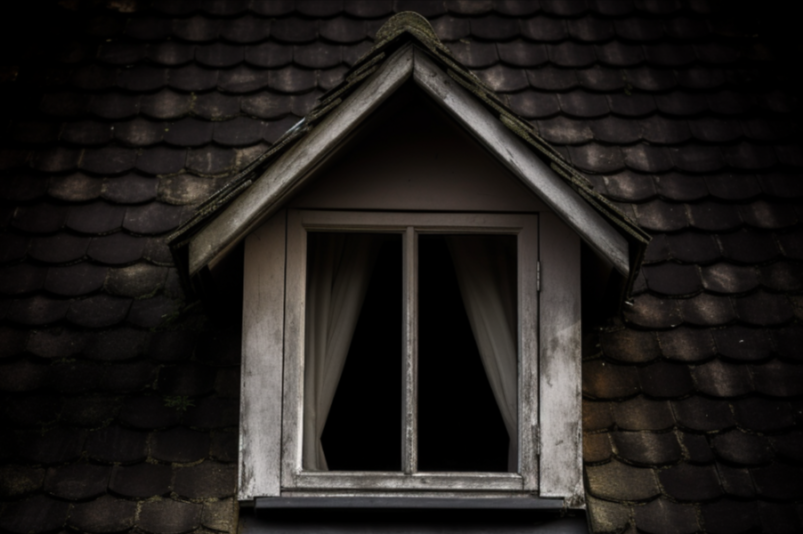
In the world of architectural design, fake dormer windows, often referred to as “false” or “decorative” dormers, serve strictly as aesthetic enhancements to a building’s exterior. While they don’t function as traditional windows by allowing light or ventilation, they add character and charm to a structure. However, there are instances when homeowners might want to blackout these decorative elements, either for aesthetic reasons or to give the illusion of a functional window that’s simply covered from the inside.
Understanding Fake Dormer Windows
Fake dormer windows are architectural features that mimic the appearance of functional dormer windows but lack the practicality of letting in light or air. They are purely decorative, often added to maintain symmetry, enhance curb appeal, or adhere to a specific architectural style. Unlike their functional counterparts, which penetrate the roof and provide additional interior space, fake dormers are surface additions, typically without any opening to the building’s interior.
The key difference between functional and decorative dormers lies in their purpose. While the former is designed to provide additional headroom and allow light and ventilation into an attic or loft space, the latter is all about aesthetics, offering no such functional benefits.
Reasons to Blackout Fake Dormer Windows
Blacking out fake dormer windows might seem counterintuitive at first, given that they don’t let in light. However, there are several compelling reasons to consider this:
Enhancing External Aesthetics: A well-done blackout can make the fake dormer window appear more authentic, as if it’s a functional window with a blackout curtain or shade inside.
Preventing the Illusion of Interior Light: In some cases, ambient external light (from streetlights, moonlight, etc.) can create an illusion of interior light behind a fake dormer. Blacking out prevents this illusion, maintaining the window’s authenticity.
Protecting the Window from External Elements: While fake dormers are designed to withstand weather conditions, adding an extra layer of protection can prolong their lifespan and maintain their appearance.
Increasing Energy Efficiency: Even though fake dormers don’t penetrate the interior, they can still conduct heat. A blackout layer can add a slight insulating effect, contributing to the building’s overall energy efficiency.
Materials and Tools Needed
To effectively blackout fake dormer windows, having the right materials and tools is essential. Here’s what you’ll need:
Blackout Materials:
- Fabric: A thick, opaque fabric can be used, especially if you want a softer appearance.
- Vinyl: This offers a sleek look and is highly effective at blocking light.
- Foam Board: Lightweight and easy to cut, foam boards can be tailored to fit any window size.
Adhesives:
- Double-sided Tape: Useful for attaching materials temporarily, allowing for adjustments.
- Velcro Strips: These offer a more semi-permanent solution and make removal easier.
Other Tools:
- Measuring tape for accurate dimensions.
- Scissors or a utility knife for cutting materials.
- A straight edge or ruler for precise cuts.
Step-by-Step Guide to Blacking Out Fake Dormer Windows
1. Measuring the Window
Start by measuring the height and width of the window to determine the size of the blackout material needed. Always add a few extra inches to account for any errors or adjustments.
2. Choosing the Right Material
Consider the exterior aesthetics of your home. Vinyl might offer a sleeker look, while fabric can provide a softer appearance. Foam board, on the other hand, is excellent for insulation.
3. Cutting the Material
Lay out your chosen material on a flat surface. Using the measurements taken, mark the dimensions on the material. Use a straight edge to ensure straight lines and then cut using scissors or a utility knife.
4. Attaching the Material
Clean the window surface to ensure adhesives stick properly. Attach the blackout material using double-sided tape or Velcro strips, ensuring it’s taut and smooth.
5. Ensuring a Seamless Look
Once attached, step back and view the window from various angles. Ensure the blackout material blends seamlessly with the window, making adjustments as necessary.
Maintenance and Care
Cleaning: Depending on the material used, periodic cleaning might be necessary. For fabric, a gentle wipe down with a damp cloth should suffice. Vinyl can be cleaned with mild soap and water.
Inspection: Regularly check the blackout material for signs of wear or damage. Ensure it remains securely attached, especially after extreme weather conditions.
Replacement: Over time, the blackout material might fade or become damaged. In such cases, consider replacing it to maintain the window’s appearance.
Conclusion
Fake dormer windows, while decorative, can benefit from the added touch of a blackout. Whether for aesthetic reasons, protection, or energy efficiency, blacking out these windows can enhance the overall appeal and functionality of your home. With the right materials and a bit of effort, you can get a seamless and professional look, adding to the authenticity and charm of their architectural features.





